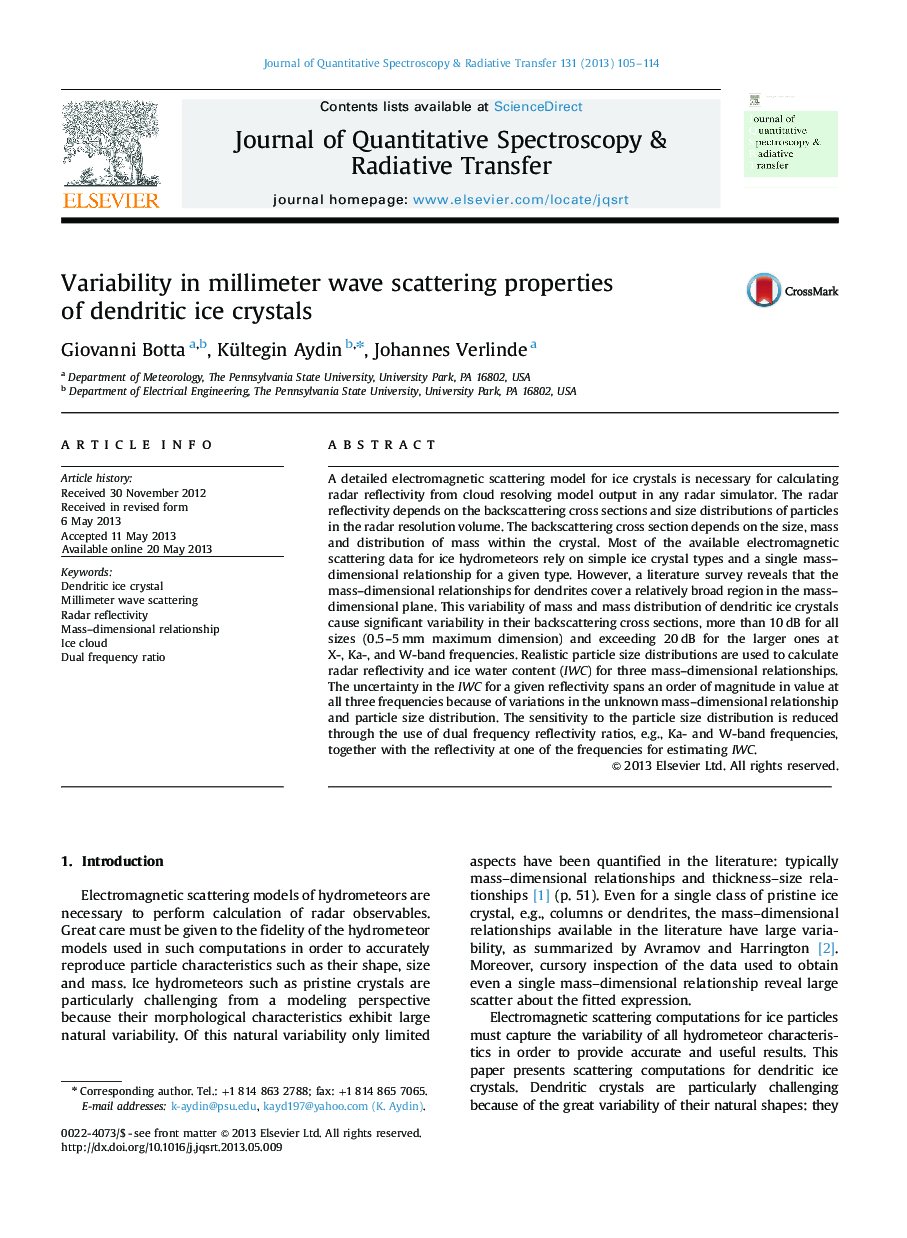| Article ID | Journal | Published Year | Pages | File Type |
|---|---|---|---|---|
| 5428594 | Journal of Quantitative Spectroscopy and Radiative Transfer | 2013 | 10 Pages |
â¢Millimeter wave backscattering characteristics of dendritic crystals are modeled.â¢Natural variability of dendrite shapes leads to large variability in their mass.â¢Dendrite mass variability causes large backscattering cross section variability.â¢Reflectivity-ice water content relation is sensitive to mass and size distribution.â¢Dual frequency reflectivity ratio reduces the sensitivity to size distribution.
A detailed electromagnetic scattering model for ice crystals is necessary for calculating radar reflectivity from cloud resolving model output in any radar simulator. The radar reflectivity depends on the backscattering cross sections and size distributions of particles in the radar resolution volume. The backscattering cross section depends on the size, mass and distribution of mass within the crystal. Most of the available electromagnetic scattering data for ice hydrometeors rely on simple ice crystal types and a single mass-dimensional relationship for a given type. However, a literature survey reveals that the mass-dimensional relationships for dendrites cover a relatively broad region in the mass-dimensional plane. This variability of mass and mass distribution of dendritic ice crystals cause significant variability in their backscattering cross sections, more than 10Â dB for all sizes (0.5-5Â mm maximum dimension) and exceeding 20Â dB for the larger ones at X-, Ka-, and W-band frequencies. Realistic particle size distributions are used to calculate radar reflectivity and ice water content (IWC) for three mass-dimensional relationships. The uncertainty in the IWC for a given reflectivity spans an order of magnitude in value at all three frequencies because of variations in the unknown mass-dimensional relationship and particle size distribution. The sensitivity to the particle size distribution is reduced through the use of dual frequency reflectivity ratios, e.g., Ka- and W-band frequencies, together with the reflectivity at one of the frequencies for estimating IWC.
